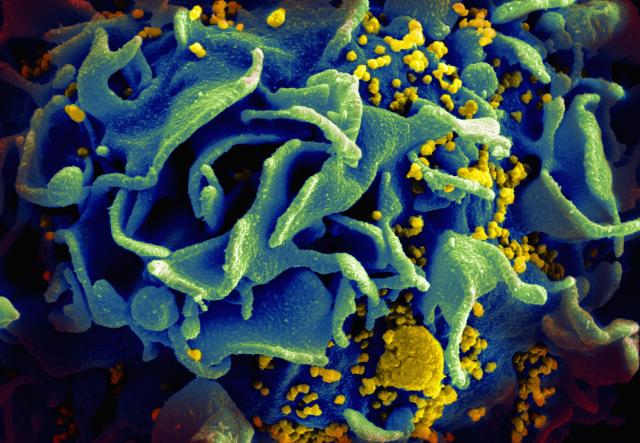For the First Time, Researchers Eliminated HIV From the Genomes of Living Animals
By Alice Park,
Time
| 07. 02. 2019
There’s no question that powerful anti-HIV medications can do a fairly good job of keeping the virus under control. Used properly, these anti-retroviral drugs (ARVs) can suppress HIV enough to keep it at levels so low they’re undetectable in the blood, which drastically lowers the chance of spreading the virus during sexual activity or transfusions. But ARVs can only do so much.
They work best on viruses that are actively making copies of themselves and infecting healthy cells. HIV has evolved to “learn” this, and can mutate to become resistant to the medications so that as soon as the drug onslaught stops, viruses replicate with abandon once again. HIV can also preserve itself by hiding, quiescent and not replicating, in lymph and other tissues throughout the body. When the immune system drops its guard, these latent viruses can start replicating again. All of which means that once a person is infected, these viruses remain in the body like an uncapped grenade, just waiting to overwhelm the immune system with millions of infectious virus, years, or even decades, after HIV infected...
Related Articles
By Jonathan Matthews, GMWatch | 12.11.2025
In our first article in this series, we investigated the dark PR tactics that have accompanied Colossal Bioscience’s de-extinction disinformation campaign, in which transgenic cloned grey wolves have been showcased to the world as resurrected dire wolves – a...
By Jenny Lange, BioNews | 12.01.2025
A UK toddler with a rare genetic condition was the first person to receive a new gene therapy that appears to halt disease progression.
Oliver, now three years old, has Hunter syndrome, an inherited genetic disorder that leads to physical...
By Simar Bajaj, The New York Times | 11.27.2025
A common cold was enough to kill Cora Oakley.
Born in Morristown, N.J., with virtually no immune system, Cora was diagnosed with severe combined immunodeficiency, a rare genetic condition that leaves the body without key white blood cells.
It’s better...
By Rachel Hall, The Guardian | 11.30.2025
Couples are needlessly going through IVF because male infertility is under-researched, with the NHS too often failing to diagnose treatable causes, leading experts have said.
Poor understanding among GPs and a lack of specialists and NHS testing means male infertility...




